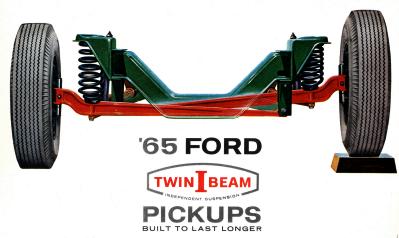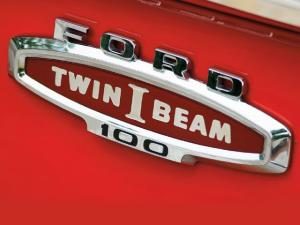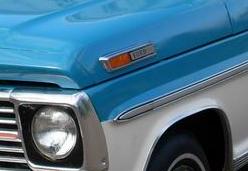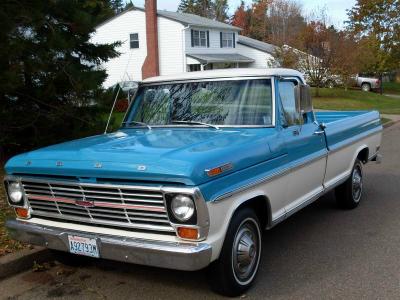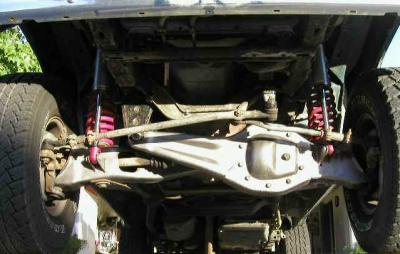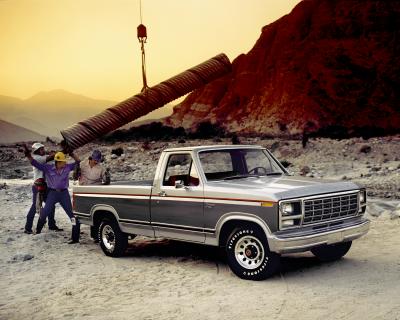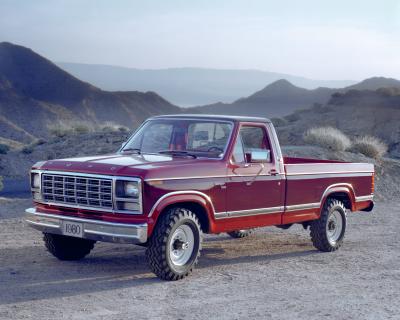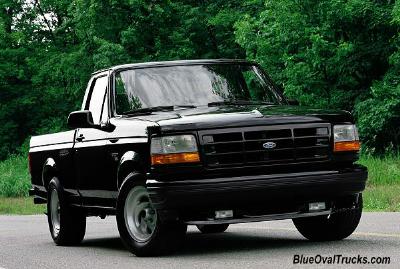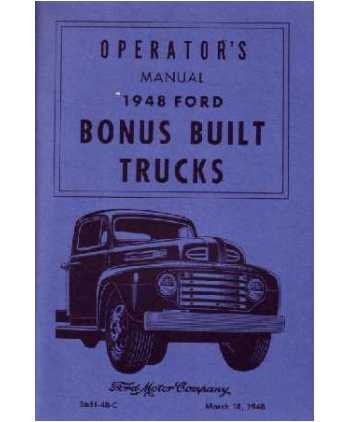1948 ford f series truck
Postal Code: 98668
Search locally
-
$24.00
1948-1952 Ford F-1 F-2 F-Series Truck NOS CLUTCH PEDAL RETURN SPRINGVancouver,WA,USA- 5mi -
$29.70
F-Series Truck Econoline Van Billet Aluminum Wiring Firewall Port F-150 F1 F-100Portland,OR,USA- 15mi -
$42.80
13" Transmission Oil Fluid Cooler Fits 1948-56 Ford F1 Truck 226 239 254 pickupPortland,OR,USA- 15mi -
$230.73
Heavy Duty Triangulated Rear Suspension 4-Link Fits 1949-1951 Ford 337 f2Portland,OR,USA- 15mi -
$19.95
Lincoln Identification Dataplate Serial Number ID Tag Continental Mark Town CarPortland,OR,USA- 15mi -
$349.95
NOS PAIR Vintage Unity H2 Fog Lights Lamps Flush Mount Amber 6 Volt 4" SpotlightSnohomish,WA,USA- 150mi -
$69.95
VINTAGE NOS 4 LITE CORNERING KIT 1968 APPEARANCE FOR STYLING + SAFETY CHEVY FD19Snohomish,WA,USA- 150mi -
$259.00
1948 1949 1950 1951 1952 Ford F-1 F-2 F-Series Truck NOS ACCESSORY DOME LAMP KITVancouver,WA,USA- 5mi
-
$18.00
Ford F100 F150 F250 F350 Pickup Truck Inside Rear View Mirror Assembly F SeriesBoring,OR,USA- 25mi -
$259.00
1948 1949 1950 1951 1952 Ford F-1 F-2 F-Series Truck NOS ACCESSORY DOME LAMP KITVancouver,WA,USA- 5mi -
$259.00
1948 1949 1950 1951 1952 Ford F-1 F-2 F-Series Truck NOS ACCESSORY DOME LAMP KITVancouver,WA,USA- 5mi -
$75.00
1937-1954 Chevrolet Ford Dodge Accessory Roof Rack Hot Eat Rod Bomb Lowrider OGLincoln City,OR,USA- 85mi -
$30.00
Original NOS Chevrolet Accessories Traffic Light Viewer GuidePuyallup,WA,USA- 105mi -
$32.00
Original Ford motor Keys Automobile key case nos accessory tool vintage ChainSeattle,WA,USA- 125mi
Learn more about 1948 ford f series truck.
1948 FORD F-2 TRUCK - THE LONGER BED VERSION
The first-generation Ford F-Series is a series of pickup trucks and commercial vehicles produced by Ford Motor Company. Introduced in 1948, the F-Series was ...
-
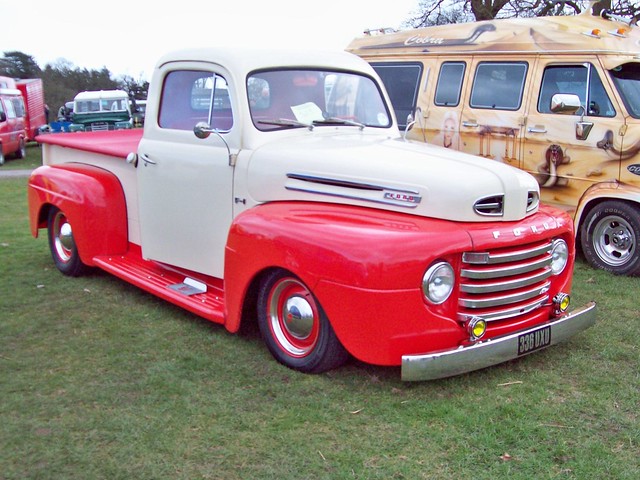
39 Ford F1 Pick Up (1948-52)
Ford F-1 Pick Up (1950) Engine 239 Cid (3.9 litre) FORD USA SET www.flickr.com/photos/45676495@N05/sets/72157623789312836... The first generation of the Ford f series Truck was introduced with the modern look....
Photo by robertknight16 on Flickr
-
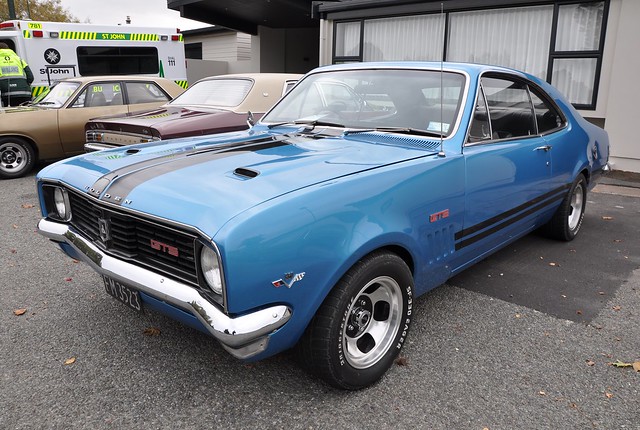
12.q. 1970 Holden Monaro HT GTS 350ci Coupe
2014 Gore Aussie Muscle Mania Car Show (12-4-14) Celebrating the 350 part #1: Chevrolet 350 V8 THE POWERPLANT (Part 1 of 2) One of the great paradoxes of automotive history is that while the Ford Motor Company was...
Photo by 70_musclecar_RT+6 on Flickr
-

1948 Ford F-6 Truck.
The Ford Motor Company made a huge investment in its new line of trucks: $1 million to redesign the cab. The resulting “Million Dollar Cab,” as it was called, was used on all eight trucks in the series and brought a...
Photo by Hugh McCall on Flickr
-
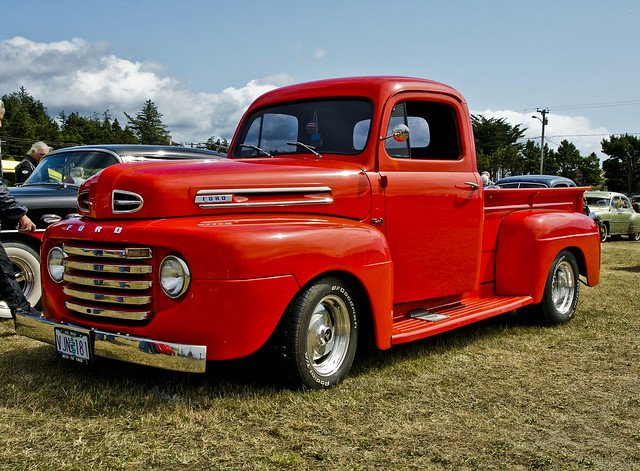
1948-FORD-F-1--DSC01125
The first year of Ford's F-1 Series pick-ups. The 2008 Port Orford "Show & Shine".
Photo by Lance & Cromwell, back from another Wroad-trip on Flickr
-
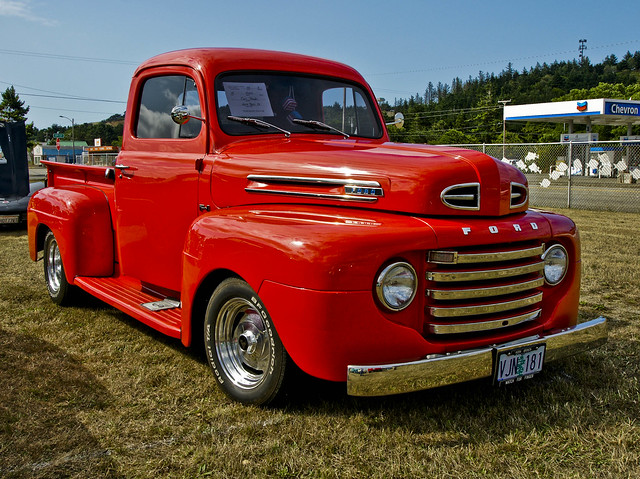
1948 FORD F-1 --DSC01001
The first year of Ford's F-1 Series pick-ups. The 2008 Port Orford "Show & Shine".
Photo by Lance & Cromwell, back from another Wroad-trip on Flickr
-
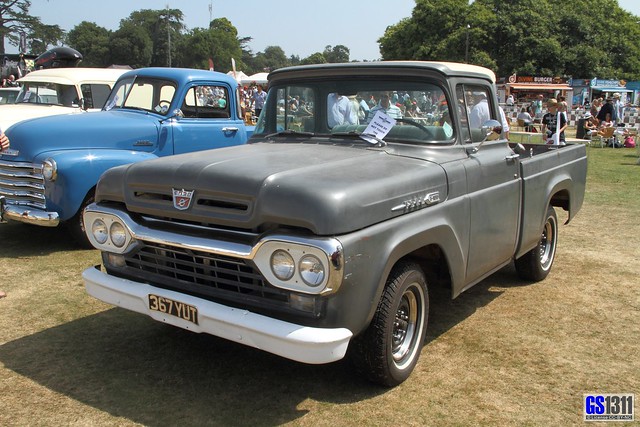
1960 Ford F-100
The F-Series is a series of full-size pickup trucks from Ford Motor Company which has been sold continuously for over six decades. The most popular variant of the F-Series is the F-150. It was the best-selling vehicle...
Photo by Georg Sander on Flickr
-

1948-FORD-F-1--DSC01124
The first year of Ford's F-1 Series pick-ups. The 2008 Port Orford "Show & Shine".
Photo by Lance & Cromwell, back from another Wroad-trip on Flickr
-
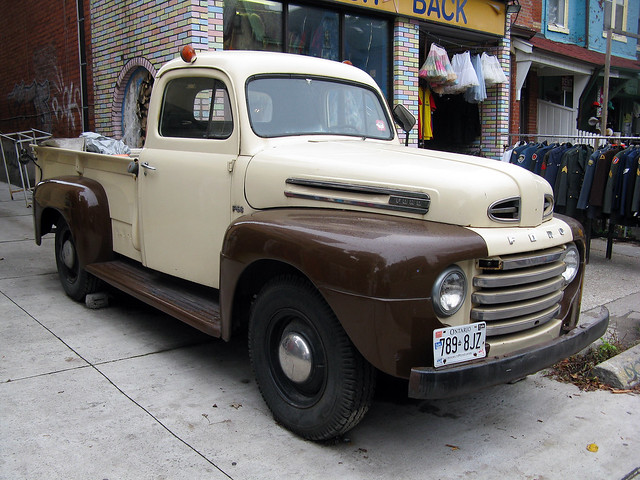
Ford F-68
A classic 1948-50 Ford F-68 pickup truck spotted in Kensington Market, Toronto in 2007.
Photo by Diego3336 on Flickr
-
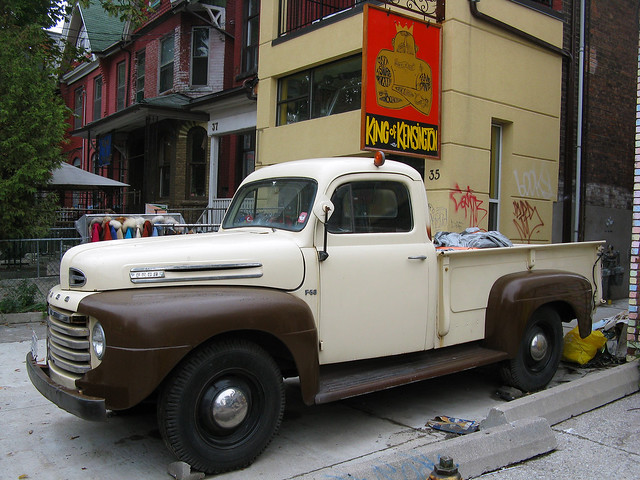
Ford F-68
A classic 1948-50 Ford F-68 pickup truck spotted in Kensington Market, Toronto in 2007.
Photo by Diego3336 on Flickr
-
1955 Ford C750 Truck
08/16/15, via Lima Ohio
Like other manufacturers that built COE trucks before the 1960s, early Ford C-Series trucks were “helmet-shaped”, cab-forward trucks that shared components with pickup trucks (the F-Series, in this case). From 1948-52, they were simply COE versions of
-
Driving: 2015 Ford F-150
08/18/15, via Vancouver Courier
If you travel down South to Tacoma and walk through the doors of the LeMay automotive museum, you'll currently find a display dedicated to the history of the Ford F-series pickup truck. They've got workin' rigs stretching right back until 1948
-
HPI RTR Savage XS Flux With Ford Raptor Body
08/20/15, via Radio control Car Action (blog)
The Ford SVT Raptor is the high performance off-road version of the Ford F-150, the most popular full-size truck in the United States with over 16 million F-150 trucks sold since its introduction in 1948.The full-size SVT Raptor is a dedicated off-road
-
Car Show to be Held Sunday at Clearfield Fairgrounds
08/20/15, via Gant Daily
Show vehicle classes are: Class A, Antique Class – to 1932; Class B, Antique Class – 1933-1948; Class C, Antique Class – 1949-1965; Class D, Antique Class – 1966-1973; Class E, Antique Class – 1974-1990; Class F, Classic Class – 1991-2000; Class G
-
Car show awards announced
08/11/15, via Elizabethtown Bladen Journal
Best Ford 1984 and Newer went to R. Johnson of Clinton for his Ford F 150 pickup truck. — Best Ford pre-1084 went to Greg Outen S.C. for his 1934 Ford all wooden truck. — Best Street Rod went to William Saunders of Fayetteville for his 1948
-
Museum & Gallery Listings for Aug. 7-13
08/06/15, via New York Times
20) The core of this show is a selection of vivid, Photorealist paintings of urban subjects like glass and chrome storefronts, movie theater marquees, cars and trucks, subways, the Brooklyn Bridge, views from the Staten Island Ferry and idyllic images
-
Art Listings for July 31-Aug. 6
07/30/15, via New York Times
Officially, this MoMA show is meant to mark the centennial of that immense population shift, though it also marks another anniversary: the first time in two decades that all 60 paintings in Jacob Lawrence's great “Migration Series,” now divided between
-
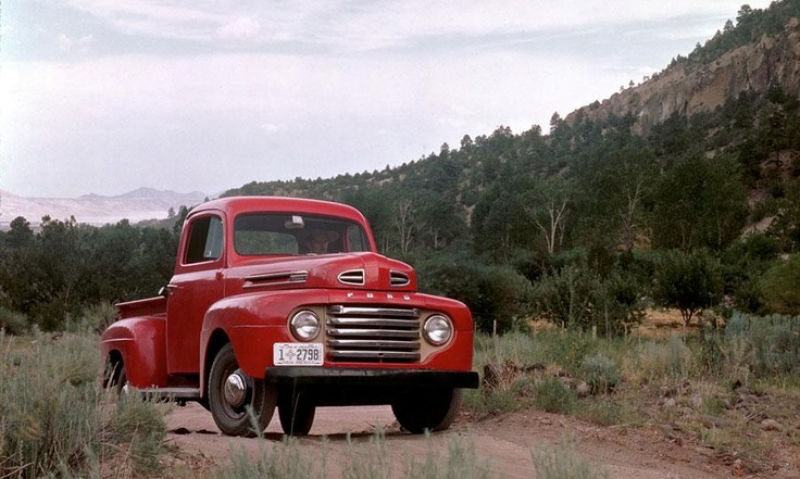 Ford 1948 F Series truckImage by pinterest.com
Ford 1948 F Series truckImage by pinterest.com -
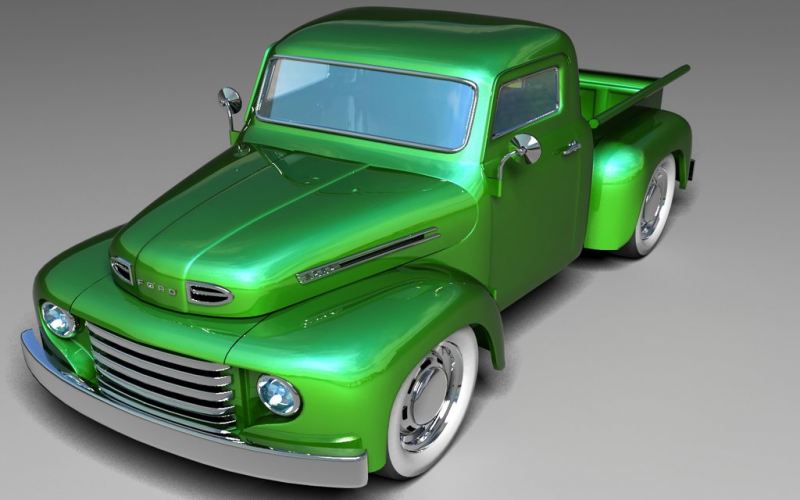 Ford F-Series Pickup Trucks: 1948-1952 by MephistophelleanImage by mephistophellean.deviantart.com
Ford F-Series Pickup Trucks: 1948-1952 by MephistophelleanImage by mephistophellean.deviantart.com -
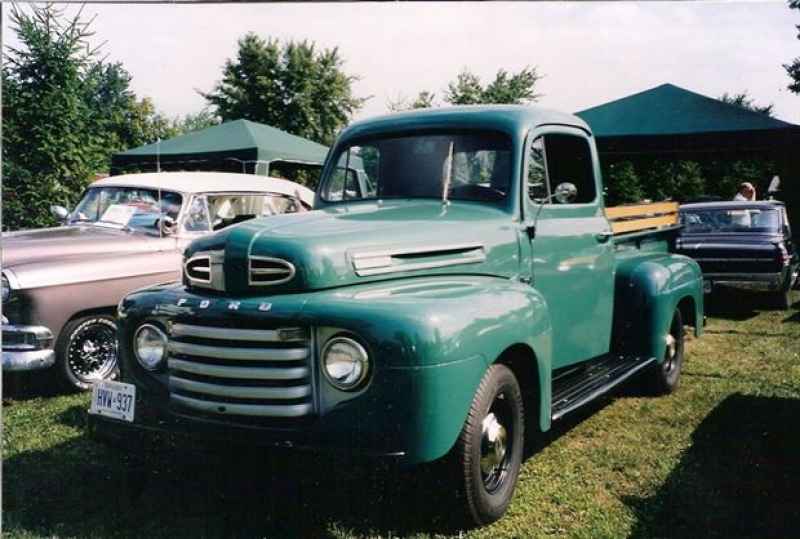 ... the Autos.ca Motoring Memories: Ford F-Series Pickup, 1948 to presentImage by www.autos.ca
... the Autos.ca Motoring Memories: Ford F-Series Pickup, 1948 to presentImage by www.autos.ca -
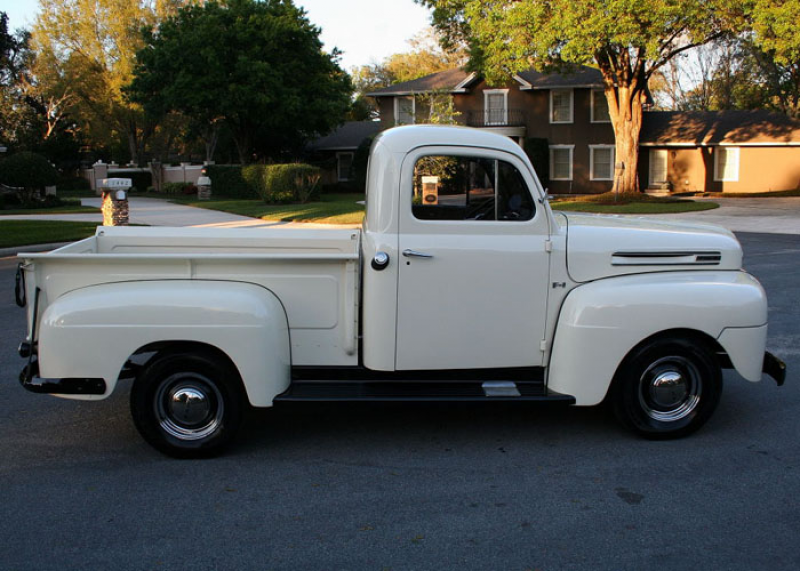 1948 ford f-1 pickup 5Image by newoldcar.com
1948 ford f-1 pickup 5Image by newoldcar.com -
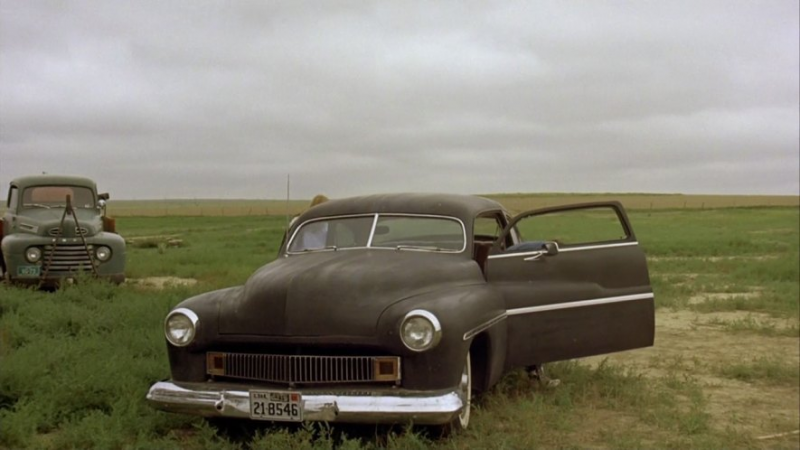 1948 Ford F-SeriesImage by www.imcdb.org
1948 Ford F-SeriesImage by www.imcdb.org -
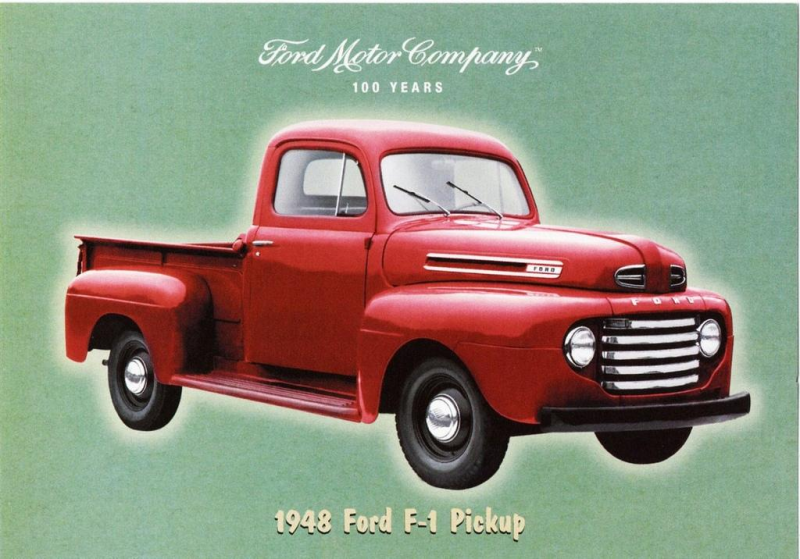 Biggest model transition in Ford history begins FridayImage by michiganradio.org
Biggest model transition in Ford history begins FridayImage by michiganradio.org -
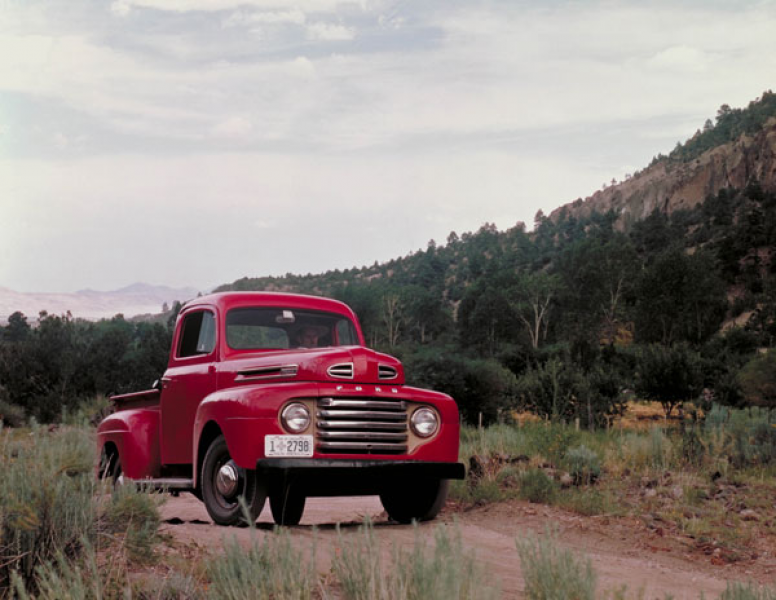 History of the Ford F-Series Pickup TruckImage by fordtacomawa.tituswillford.com
History of the Ford F-Series Pickup TruckImage by fordtacomawa.tituswillford.com -
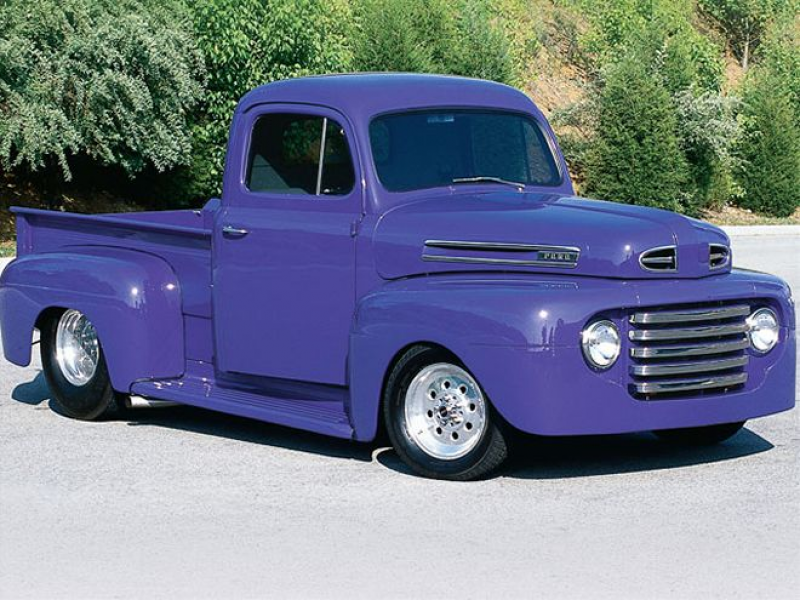 1948 Ford F1 - Budget Built On Pro StreetImage by www.hotrod.com
1948 Ford F1 - Budget Built On Pro StreetImage by www.hotrod.com -
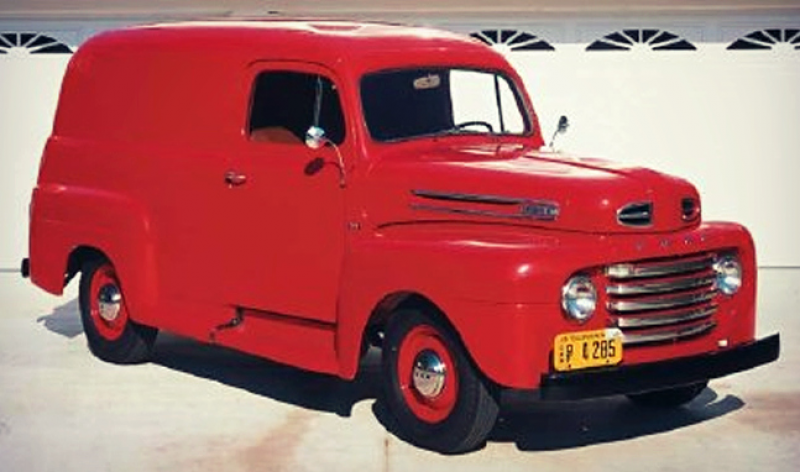 1948-Ford-F-Series-Panel-TruckImage by coolmaterial.com
1948-Ford-F-Series-Panel-TruckImage by coolmaterial.com
Driving: 2015 Ford F-150 - Vancouver Courier
If you travel down South to Tacoma and walk through the doors of the LeMay automotive museum, you’ll currently find a display dedicated to the history of the Ford F-series pickup truck. They’ve got workin’ rigs stretching right back until 1948, although of course the old Fords are retired from heavy lifting, spending their days cruising or under the spotlights. I drove down there to check them out in this machine, something that the horny-handed sons of the soil that drove the old F-series would have trouble recognizing as a work vehicle. You half expect the original trucks to gang up on the shiny new city slicker like that part in the Old El Paso commercials where the salsa label says “New York City. That truck’s jest too darn fancy for these parts. However, well-equipped F-150s are finding their way into more and more Canadian driveways these days, not just as tools for work, but for fun as well. Welp, she’s a truck all right. If the old F-series started out small with curvy sheetmetal, the current heavy half-ton is the size of an oil tanker. The FX4 designation sets the F-150 up as an offroad-ready sport truck – not a baja-style Raptor, but tough enough. Source: www.vancourier.com
Car Show to be Held Sunday at Clearfield Fairgrounds - Gant Daily
annual Central Mountains Region Antique and Custom Auto Show will be held this Sunday at the Clearfield Fairgrounds, rain or shine. This year’s main show sponsor is FORD® and Dotts Motor Company, Clearfield. Car registration will be open from 9 a. m. – 12:30 p. m. Trophy presentations will begin at 3:30 p. m. Entertainment will be provided by Tim Winters Enterprises. Starr Hill Winery will be on-hand with wine to sample and purchase. Central Mountains Region AACA has its own wine that will feature a 1940 Plymouth owned by George and Linda Webster of Osceola Mills. Starr Hill Winery gives a percentage of these wines to the club, which is a non-profit organization. These wines will be on sale after the show at all of the Starr Hill Winery locations. This year the club will raffle off a 1966 Ford Mustang, a two-door hard top with 35,000 original miles, and there will be a 50/50, as well. Vintage antique, classic and muscle cars as well as custom and modified cars, trucks, and motorcycles and other vehicles may compete for trophies in 19 classes. There will also be a space for vehicles that do not make the classes for “display only. Show vehicle classes are: Class A, Antique Class –. Source: gantdaily.com
2015 Ford F-150 - Reflejos
The F-150 pickup truck is an important vehicle for this country. The disruption that the sudden withdrawal of all Mexican immigrants would cause in the U. S. economy, could be compared with the consequences of suddenly stopping all Ford F-150 pickup trucks currently circulating on American roads. The attachment of Americans to their trucks is known throughout the world, and the F-150 is the best symbol of this idyll. The “F” series has been in continuous production since 1948, and its variant, the F-150, has been the best selling vehicle in America for 32 years, and the best-selling truck for 43 consecutive years. The 2015 Ford F-150 debuts the 13th generation, and of course, it comes completely redesigned. Ford perhaps anticipated the controversy surrounding the use, for the first time, of an aluminum body. Actually, another maker already plans to build its first model with an aluminum body. The new Ford weighs 700 pounds, which results in increased loading and towing capacity. Because the new truck is lighter, it requires less braking distance, and of course, consumes less fuel. The cabin of the new Ford is bigger. Rear-view mirrors have space to see the whole city in the distance, and in the rear seats. Source: www.reflejos.com
-
F 450 Truck
Shop for a Ford F-450 Truck. Call or Visit Fette Ford Today.
-
1948 Ford F-Series Trucks - HowStuffWorks
Ford's top management knew full well how crucial the new 1948 F-Series truck program was to the company's long-range goals. Let's examine how Ford's 1948 truck line differed from the one it was replacing.
First of all, and critically important, Ford's truck range was substantially expanded. In 1947, the line consisted only of a 114-inch-wheelbase 1/2-ton series; a 122-inch-wheelbase one-ton series (called the Tonner); the Vanette, which was a forward-control delivery route van built on a modified Tonner chassis; and a heavy duty line of 11/2- and two-ton conventional cab and cab-over-engine models.
The 1/2-ton and Tonner series included finished pickup, panel, stake, and platform models, as well as chassis/cowl, chassis/windshield, and chassis/cab jobs adaptable to aftermarket conversions. The heavy duty lines were restricted to stake and platform bodies, and chassis/cowl, chassis/windshield, and chassis/cab models. A special 134-inch-wheelbase dump truck chassis with cab completed the offerings.
In contrast, the 1948 line consisted of eight levels, that is, 1/2-, 3/4-, heavy duty 3/4-, one-, 11/2-, two-, 21/2- and three-ton trucks. Only one panel model was now cataloged, in the light duty 1/2-ton range, but it gained a new body with a slightly longer cargo area than in the 1947.
The only commercial body types that didn't reappear in 1948 were the car-based sedan delivery and the Vanette. In the case of the former, Ford engineers were too busy with the bread-and-butter trucks to be distracted by a specialized, low-volume model. The latter was revived in 1949 as the Parcel Delivery chassis, an adaptation of the F-3 available on two wheelbases.
The engineers' second departure from past practices was the use of an engine not already in use in a FoMoCo car. (The only other time Ford used a non-auto engine in a truck -- transit buses excepted -- was in 1941 and 1942, when a 120-cubic-inch four-cylinder tractor engine was offered as an option for 1/2-ton trucks. But it was created by cutting Ford's famous 239-cubic-inch "flathead" V-8 automobile engine in two.) The new engine was a 337-cubic-inch L-head V-8, commonly known as the Lincoln engine because a version of it also powered Lincoln cars beginning in 1949. This big V-8 was responsible for putting Ford squarely in the heavy truck business.
Ford billed its 11/2- and two-ton trucks as "Heavy-Duty" models and the new 21/2- and three-tonners as "Extra Heavy-Duty" models. According to standard industry practice, they would have been classified as medium duties and heavy duties, respectively. Ford's terminology was perfectly acceptable, though, because compared to its other trucks, these were indeed heavy and extra-heavy duty vehicles.
The third new component in Ford's marketing strategy was a simple yet valuable and effective nominal size rating system. The trucks were badged F-1 (for the 1/2-ton models) through F-8 (for the three-ton jobs), the "F" having no more significance than to stand for Ford. The system indelibly stamped various gross vehicle weight (GVW) ratings in the minds of buyers, sellers, and users of Ford trucks. (At the time, the industry recognized seven standard weight classifications, instead of the eight currently in use.)
Ford's long-term goal was to overtake both archrival Chevrolet and International. Chevrolet was the industry leader in light duty and medium duty trucks, while International dominated in the higher end of the medium duty class and in heavy duties. Ford's F-1 through F-6 vehicles were aimed directly at Chevrolet, while the new F-7 and F-8 models targeted International. The idea was hardly original; Ford picked it up from International. But Dearborn's effective use of this model identification system was later duplicated by the rest of the industry.
Go to the next section to read about Ford's 1948 light-duty F-Series trucks.
For more information on cars, see: Classic Cars Muscle Cars Sports Cars New Car Search Used Car Search
-
Classic Ford F-Series Pickup Trucks, 1948-1956 (Truck ...
About the Author
Don Bunn developed his love for Dodge trucks as a teenager when he bought his first old truck. Since then, he has been collecting everything he can find regarding Dodge trucks, as well as materials pertaining to all makes of trucks. He stays abreast of the subject by reading, writing, and of course talking with other truck enthusiasts.

-
Ford F-Series first generation - Wikipedia, the free ...
Main article: Ford F-Series
 This article relies largely or entirely upon a single source. Relevant discussion may be found on the talk page. Please help improve this article by introducing citations to additional sources. (March 2014)
This article relies largely or entirely upon a single source. Relevant discussion may be found on the talk page. Please help improve this article by introducing citations to additional sources. (March 2014)
 This article needs additional citations for verification. Please help improve this article by adding citations to reliable sources. Unsourced material may be challenged and removed. (March 2014)
First generation
This article needs additional citations for verification. Please help improve this article by adding citations to reliable sources. Unsourced material may be challenged and removed. (March 2014)
First generation
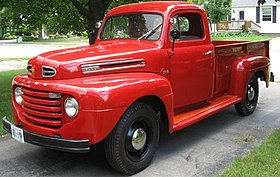
1950 Ford F-3
Overview Manufacturer Ford Also called Ford Bonus-Built Production 1948–1952 Model years 1948–1952 Assembly Chester, Pennsylvania, USADearborn, Michigan, USAEdison, New Jersey, USALong Beach, California, USANorfolk , VirginiaSt. Paul, MinnesotaSt. Louis, Missouri, USAHapeville, Georgia, USAHighland Park, Michigan, USA Body and chassis Class Full-size pickup truck Body style 2-door pickup4-door panel truck Layout Front engine, rear-wheel drive / four-wheel drive Powertrain Engine 226 cu in (3.7 L) I6239 cu in (3.9 L) Flathead V8254 cu in (4.2 L) I6337 cu in (5.5 L) Flathead V8215 cu in (3.5 L) I6279 cu in (4.6 L) Y-block V8317 cu in (5.2 L) Y-block V8 Transmission 3-speed manual4-speed manual5-speed manual Chronology Predecessor 1941-1947 Ford pickup Successor Ford F-Series second generation (1953–1956) 1950 F-6 with a 254-CID straight-six
1950 F-6 with a 254-CID straight-six
The first-generation Ford F-Series is a series of pickup trucks and commercial vehicles produced by Ford. Introduced in 1948, the F-Series was the first post-war truck design from Ford. In a break from previous Ford trucks, the F-Series was no longer based upon its car chassis, but on a dedicated truck platform. This generation of the F-Series would remain in production until 1952. F-Series trucks were assembled at sixteen different Ford factories. Serial numbers indicate the truck model, engine, year, assembly plant, and unit number. The most common model was the F-1 with a 6?½-foot bed followed by the F-2 and F-3 Express models with an 8-foot (2.4 m) bed.
Contents
1 Design 2 Models 3 Powertrain 3.1 Engines 3.2 Transmissions 4 ReferencesThe first F-Series truck (known as the Ford Bonus-Built) was introduced in 1948 as a replacement for the previous car-based pickup line introduced in 1941. It had a flat, one-piece windshield and integrated headlamps.[1] It had a wider cab.[1] Options included the "See-Clear" windshield washer (operated by foot plunger), passenger-side windshield wiper & sun visor, and passenger-side taillight. The F-1 truck was also available with additional chrome trim and two horns as an option. All F-series were available with optional "Marmon-Herrington All Wheel Drive" until 1959.
Design of the F-Series truck changed tremendously from 1950 to 1954. From 1948 to 1950, the grill was a series of horizontal bars and the headlights were set into the fenders. For 1951 and 1952, the headlights were connected by a wide aerodynamic cross piece with three similarly aerodynamic supports. The rear window was wider in these later trucks and the dashboard was redesigned. This new cab was called the "Five-Star Cab".
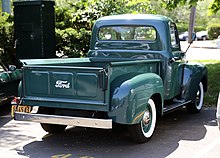 1951 Ford F-series, showing the larger rear window
1951 Ford F-series, showing the larger rear window
The F-Series was sold in four basic models. Along with the pickup truck (F-1 through F3), the F-Series was sold as a panel truck (based on the pickup), COE/cab-over engine chassis (F-5 and F-6, branded C-Series) and school bus chassis (F-5 and F-6, branded B-Series). Above the F-5, the F-Series was a medium-duty and heavy-duty conventional truck sharing the bodywork of the smaller F-Series.
The models are:
F-1: 1/2 ton (4,700 GVWR max.) F-2: 3/4 ton (5,700 GVWR max.) F-3: Heavy Duty 3/4 ton (6,800 GVWR max.) F-3: Parcel Delivery (7,000 GVWR max) & optional rear spring pkg (7,800 GVWR max.) F-4: 1 ton (7,500 GVWR max) & optional 1¼ ton pkg (10,000 GVWR max.) F-5: 1½ ton: Conventional, school bus, and cab over engine (C.O.E.) (10,000–14,500 GVWR) F-6: 2 ton: Conventional, school bus, and C.O.E. (14,000–16,000 GVWR) F-7: Conventional (17,000–19,000 GVWR) F-8: Conventional (20,000–22,000 GVWR)Variation by Year:
1948: Feature a wider, longer, and taller cabs. Model designations for trucks were badged as F-1s. 1949: The most noticeable change on the 1949 trucks was the deletion of the red pinstripes on the silver painted grille bars. Wheels were painted to match body color, rather than the previous black wheels. 1950: The standard three-speed shift was relocated from the floor to the steering column. 1951: The 1951 trucks were restyled with a single bar type grille and a headlight at each end of the grille bar. The grille was painted argent (silver) to complement the chrome headlight bezels. During the model year, the grille was painted ivory and the headlight rings argent (silver). The hood got new side spears and a three slot embellishment at the front. The front bumper was redesigned. A V-8 emblem was used on the upper grille support on corresponding trucks. The pickup bed and tailgate were redesigned. The bed used a hardwood floor instead of the previous all metal floor. The rear window was larger. Door panels were also added. 1952: The VIN plate was attached to the rear face of the driver's door. The information on the rating plate is the VIN number. The VIN number identifies the series, model year, assembly plant and production sequence. Powertrain[edit] Engines[edit] Engine Years Power Usage 226 CID Flathead 6 I6 1948–51 95 hp (71 kW) at 3,300 rpm F-1 through F-6 239 CID Flathead V8 1948–52 100 hp (75 kW) at 3,800 rpm F-1 through F-6 254 CID Flathead 6 1948–51 110 hp (82 kW) at 3,400 rpm F-6 only 337 CID Flathead V-8 1948–51 145 hp (108 kW) at 3,600 rpm F-7 and F-8 215 CID OHV Straight-6 1952–53 101 hp (75 kW) 279 Lincoln Y-block (EAL) 1952–55 145 hp (108 kW) at 3,800 rpm F-7 only 317 Lincoln Y-block (EAM) 1952–55 155 hp (116 kW) at 3,900 rpm F-8 only Transmissions[edit]All are manual.
3-speed light-duty, F-1 only 3-speed heavy-duty, F-1 through F-5 4-speed (spur gear), F-1 through F-6 4-speed Synchro-Silent, F-4 through F-6 5-speed overdrive, F-7 and F-8 5-speed direct drive, F-7 and F-8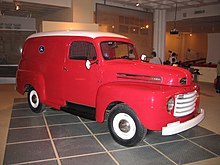 1948 F-1 used by Israel Postal Company in 1948–1949, now at Eretz Israel Museum, Philatelic Building
References[edit]
1948 F-1 used by Israel Postal Company in 1948–1949, now at Eretz Israel Museum, Philatelic Building
References[edit]
 Wikimedia Commons has media related to Ford F-Series (1948).
^ a b Gunnell, John A. (1993). Standard Catalog of American Light-Duty Trucks. krause Publications. ISBN 0-87341-238-9.
Ford F-Series production models and variants
Ford F-Series generations
Wikimedia Commons has media related to Ford F-Series (1948).
^ a b Gunnell, John A. (1993). Standard Catalog of American Light-Duty Trucks. krause Publications. ISBN 0-87341-238-9.
Ford F-Series production models and variants
Ford F-Series generations
Pickup Trucks(½–1 ton)
First generation (1948–1952) Second generation (1953–1956) Third generation (1957–1960) Fourth generation (1961–1966) Fifth generation (1967–1972) Sixth generation (1973–1979) Seventh generation (1980–1986) Eighth generation (1987–1991) Ninth generation (1992–1996) Tenth generation (1997–2003) Eleventh generation (2004–2008) Twelfth generation (2009–2014) Thirteenth generation (2015–)Super Duty (¾–1½ ton)
First generation (1999–2007) Second generation (2008–2010) Third generation (2011–)Medium-Duty Trucks(Class 5–7 Trucks)
F-Series "Big Job" (1951–1953, 1954–1957) F-Series "Super Duty/Extra Heavy Duty" (1958–1962) F-Series Medium Duty (1967–1979) F-Series Medium Duty (1980–1998) F-Series Super Duty (F-450/F-550; 1999–) F-Series Medium Duty (F-650/750; 2000–) Related models
Ford Bronco
Ford Expedition
Ford Excursion
Ford Super Duty
Lincoln Blackwood
Lincoln Mark LT
Lincoln Navigator
SVT Lightning
SVT Raptor
Related articles
Ford Atlas (2013)
Ford F-250 Super Chief (2006)
Ford B-Series
Hennessey VelociRaptor SUV
Hennessey VolociRaptor600
Mercury M-Series
Plasan/Oshkosh Sand Cat
Knight XV
Lenco BearCat
TAV Gurkha
Related models
Ford Bronco
Ford Expedition
Ford Excursion
Ford Super Duty
Lincoln Blackwood
Lincoln Mark LT
Lincoln Navigator
SVT Lightning
SVT Raptor
Related articles
Ford Atlas (2013)
Ford F-250 Super Chief (2006)
Ford B-Series
Hennessey VelociRaptor SUV
Hennessey VolociRaptor600
Mercury M-Series
Plasan/Oshkosh Sand Cat
Knight XV
Lenco BearCat
TAV Gurkha
 Category
Category
 Commons
Commons
 WikiBooks
WikiBooks
 WikiNews
« previous — Ford Motor Company light truck timeline, North American market, 1946–1979 — next »
Type
1940s
1950s
1960s
1970s
6
7
8
9
0
1
2
3
4
5
6
7
8
9
0
1
2
3
4
5
6
7
8
9
0
1
2
3
4
5
6
7
8
9
SUV
Bronco
Bronco
Coupé utility
Ranchero
Ranchero
Ranchero
Ranchero
Ranchero
Ranchero
Ranchero
Compact pickup
Courier
Courier
Full-size pickup
Standard/Deluxe
F-Series
F-Series
F-Series
F-Series
F-Series
F-Series
Van
Econoline
Econoline
Econoline / Club Wagon
WikiNews
« previous — Ford Motor Company light truck timeline, North American market, 1946–1979 — next »
Type
1940s
1950s
1960s
1970s
6
7
8
9
0
1
2
3
4
5
6
7
8
9
0
1
2
3
4
5
6
7
8
9
0
1
2
3
4
5
6
7
8
9
SUV
Bronco
Bronco
Coupé utility
Ranchero
Ranchero
Ranchero
Ranchero
Ranchero
Ranchero
Ranchero
Compact pickup
Courier
Courier
Full-size pickup
Standard/Deluxe
F-Series
F-Series
F-Series
F-Series
F-Series
F-Series
Van
Econoline
Econoline
Econoline / Club Wagon

-
1948-1949 Ford F-Series Truck Features and Prices ...
The 1948-1949 Ford F-Series trucks came in eight standard paint colors: Barcelona Blue, Medium Luster Black, Feather Gray, Glade Green, Monsoon Maroon, Rotunda Gray, Vermilion, and Tucson Tan. Wheels were painted black, as were the bumpers and running boards (except on panels, which had body-color running boards). The recessed area around the grille on early 1948s was painted tan; late 1948 production used argent paint. Also, the grille bars were chrome covered up to mid-July, after which they were argent with red pinstriping.
Two L-head engines were available for the new light duty trucks. The 7H version of Ford's 226-cubic-inch six adopted for 1947 passenger cars spread to the 1948 truck line. It was rated at 95 horsepower at 3300 rpm. For an additional charge, truck buyers could opt for the 239-cube V-8 that made 100 horsepower at 3,800 rpm. A three-speed transmission with a floor shift was standard in the F-1, with heavy duty three-and four-speeds available as extra cost options. F-2s and F-3s came with the four-speed standard.
Prices ranged from a little more than $900 for a six-cylinder F-1 chassis-and-cowl unit to almost $1,500 for an F-3 stake truck with V-8. Despite price increases of roughly $30 to $60 compared to the 1947 trucks, sales of the F line were brisk. In 1947, Ford built 62,072 1/2-ton trucks and another 29,343 Tonners. The 1948 F-1 range drew 108,006 orders, 13,255 F-2s were assembled, and F-3 output came to 22,069 units. All told, Ford had its best year for truck production since 1929. But Chevrolet's "Advance-Design" trucks were still immensely popular and broke Ford's 19-year-old production record.
With attention at Ford shifted to the company's first new postwar car lines, there were no major changes for the 1949 trucks. The easiest ways to distinguish a 1949 F-Series from a 1948 are its body-color wheels (on F-1s) and the elimination of the red striping on the grille bars. All body colors carried over.
Truck production for the industry as a whole declined in 1949 from the torrid pace of 1948. Ford's total was down, too, but not as much as the industry average. F-1 assemblies totaled 104,803. Output of F-2 and F-3 vehicles came to 12,006 and 21,200 units, respectively.
On the next page, find out about 1950 and 1951 Ford F-Series trucks.
For more information on cars, see: Classic Cars Muscle Cars Sports Cars New Car Search Used Car Search
-
1948 Ford F-Series Truck Parts > LMC Truck Has 1948 Ford F ...
1948 Ford F-Series Truck Parts > LMC Truck Has 1948 Ford F-Series Truck Parts In Stock

RESTORE ... MAINTAIN ... CUSTOMIZETruck Parts & Accessories ForChevy, GMC, Ford, Dodge Trucks & SUVs
Call Toll Free - USA & Canada(800) 562-8782
Home Quick Order Order Status View Cart My Account CHEVROLETGMCFORDDODGEVANPRODUCT VIDEOSIN OUR GARAGEFREE CATALOGSYOUR SELECTIONS: > www.LMCTruck.com > Years Covered > 1948 Ford F-Series PartsYour Catalog of Accessories and Parts for
Your web browser settings are currently disabling the use of Javascript. This page may not function correctly without Javascript.
Click herefor information regarding enabling Javascript.

-
The History Of The Ford F-Series In The 20th Century
First Generation 1948 - 1952
1948 - In January 1948, a new era began at the Ford Motor Company with the release of an all-new line of trucks that Ford dubbed the "F-Series."
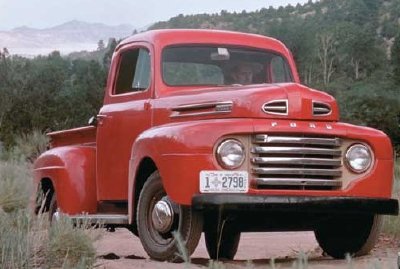
This new series, which Ford promoted as its "Bonus Built Line," covered a wide range of models with different cab and chassis combinations. The line started out with light-duty 1/2-ton-rated pickup trucks and ran all the way up to the Extra Heavy-Duty, three-ton-rated F-8. These trucks used a completely redesigned cab with all-new front-end sheetmetal. And in a departure from previous practice, the same cab served both conventional and Cab-Over-Engine models.
Along with the fresh styling given 1948 Ford trucks came new model designations; this 1/2-ton was labeled the F-1. Squared-off front fenders wrapped smoothly into the front fascia, which contained a prominent horizontal-bar grille. Rear fenders were styled to match the profile of the fronts. Also new was a one-piece windshield.
1951 - Ford trucks received a number of revisions for 1951. Restyled for the first time since their 1948 debut, Ford's F-Series received modified front fenders, grille cavity, and grille. Also changed were the hoods and cabs, along with the dashboard and rear window, which was now substantially larger for better visibility.
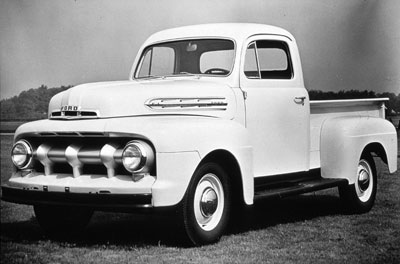
Also for 1951 -- and for the first time since the late 1930s -- Ford offered truck buyers two levels of cab trim: the standard Five Star Cab and the deluxe Five Star Extra Cab. The latter came with such niceties as foam seat padding, extra sound-deadening material, bright metal trim around the windshield and vent windows, an argent-finished grille bar, locks and armrests on both doors, two-toned seat upholstery, a dome light, and twin horns.
Pickup beds now had a wood floor rather than steel, and note the larger rear window that accompanied the 1951 redesign. As advertised on its nose, this truck carries Ford's 239-cubic-inch flathead V-8, still rated at 100 horsepower.
1952 - Ford truck styling was altered little for 1952, with the most noticeable change affecting the nose and side trim on the trucks' hoods. Beneath the hood was a different story, however, as a new six-cylinder engine boasting overhead valves was introduced. Sized at 215 cubic inches, it produced 101 horsepower, six more than the 226-cid flathead six it replaced. The flathead V-8 continued to be used in Ford pickups as before, although cars and heavy-duty trucks offered overhead-valve V-8s.
Second Generation 1953 - 1956
1953 - Ford Motor Company celebrated its Golden Anniversary in 1953 by introducing a totally redesigned line of F-Series trucks. It was the first redesign of the truck since 1948. 1953 trucks received a longer hood that flowed into the front fenders, along with horizontal grille bars. Cabs were also new, boasting more glass area. Instead of calling these trucks the "Bonus Built" models, as they had been from 1948 to1952, Ford now referred to them as the "Economy Truck Line." Joining the new name was a new hood emblem: a gear cog bisected by a lightning bolt below the Ford script. And for the first time in Ford-truck history, an automatic transmission was offered as an option, though initially only on F-100s. This would prove to be the final year for the flathead V-8.
The company also took this opportunity to change its model designations, adding "00" to the end of the existing monikers. Thus the F-1 became the F-100, and so on. These designations are still used today.
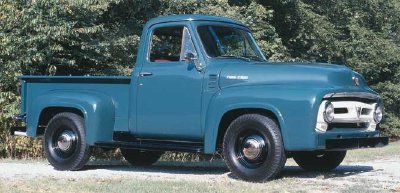
1954 - The 1954 model year brought the end of Ford's famous flathead V-8 engine, replaced in trucks that year by the overhead-valve V-8 already two years old in Ford's car line. Referred to as the "Y-Block" engine, it displaced the same 239 cubic inches as the flathead, but produced nearly 15 percent more horsepower. Also for that year, the automatic transmission option was expanded to include F-250 and F-350 trucks.
Another grille change marked Ford's 1954 trucks, this time adding a pair of prominent vertical guards. The V-8 badge on the grille indicates this pickup has Ford's new overhead-valve V-8. At 239 cubic inches, displacement was the same as the flathead's, but horsepower rose from 110 to 130.
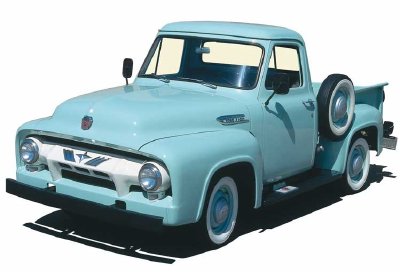
A cross in the center of this 1954 Ford F-100's grille (above) indicates that the truck carries the revised six-cylinder engine Ford issued for 1954. A bore increase brought it up to 223 cubic inches and 115 horsepower from 215 cid/101 hp.
The six chrome hash marks that flank the cross indicate this is a Deluxe model, which had fancier trim. Adopted with the 1953 redesign (and featured on this vehicle) was a new hood badge featuring a lightning-bolt/gear-wheel motif below the famous Ford script.
1955 - Yet another change to grille design differentiated the 1955 Ford trucks from the 1954s. The vertical guards were dropped in favor of a V-shaped dip in the upper bar, which again carried an indicator of a six-cylinder or V-8 engine. Less obvious were the switch to tubeless tires on F-100s and the newly optional power brakes. Not surprisingly, the F-100 with the 6-1/2 foot bed was Ford's most popular truck in 1955.
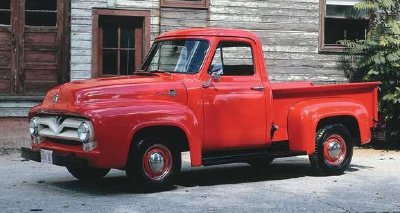
1956 - In an effort to match the redesigned Chevrolet trucks that had appeared for 1955, Ford attempted to modernize its F-Series trucks by giving them wraparound windshields and restyled dashboards. Ford's 1956 truck grilles got the customary annual update, and now boasted a "Back to the Future" look very similar to that of the 1953 Ford truck models.
Third Generation 1957 - 1960
1957 - Ford's F-Series trucks now sported a completely new look that was more square and modern, while at the same time featuring a wider cab, hidden running boards, flush-mounted front fenders, and a wider, full-width hood. The 1957 model year also brought a choice of two pickup beds: the traditional Flareside, with a narrow bed and attached rear fenders, and the new Styleside, with straight-through fenders. A straight-sided bed was nothing new to the industry, but unlike other manufacturers, Ford offered its Styleside pickup box at no extra charge. pickup beds were offered in 6-1/2 and 8-foot lengths for the 1957 Ford F-Series trucks. Engine choices included a 223-cubic-inch six, with 139 horsepower, and a 272-cid V-8 with 171 hp.
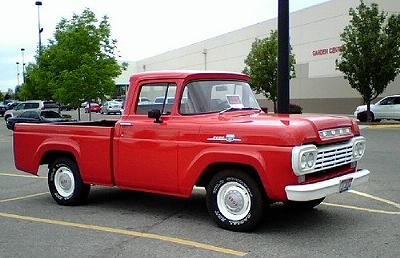
(No, 1957 F-100's did not come with white letter tires)
1958 - nearly all Ford trucks were restyled to accommodate quad headlights. For the F-Series trucks, that meant a restyled grille -- which they had been getting every year anyway. But the big change -- literally -- was a new line of heavier-duty model trucks called Super Duty, which came equipped with new V-8 engines of up to a whopping 534 cubic inches. By this time, interiors were beginning to show some style themselves, with contoured dashboards and car-like instrument panels.
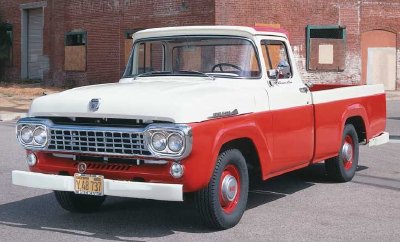
1959 - For the first time in Ford history, a light-duty truck buyer could buy a factory-built 4x4 Ford truck. Previously, Ford trucks had been converted to four-wheel drive by outside manufacturers such as Marmon-Herrington, Napco, or American-Coleman. Although more buyers still chose the 6-1/2 foot bed for their F-100 trucks, the 8-foot bed was gaining in popularity and would eventually surpass its shorter sibling in sales. Likewise, the smooth-sided Styleside bed sales would soon top those of the "traditional" Flareside.
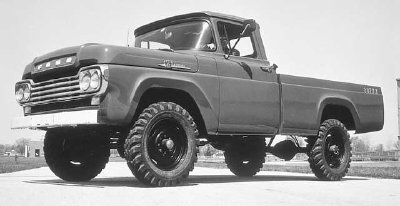
1960 - Ford trucks would have the same body for 1960, but the grille would extend down to the bumper and was joined by slots in the hood's leading edge.
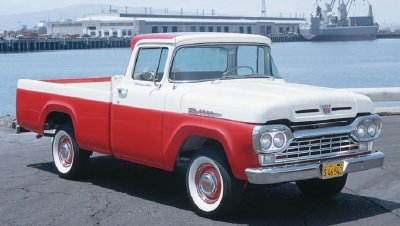
Fourth Generation 1961 - 1966
1961 - Ford F-100 Styleside pickup beds were integrated with the cabs in an F-Series redesign for 1961. Traditional Flareside beds continued to be offered as well, and both styles were available in 6-1/2 and 8-foot lengths.
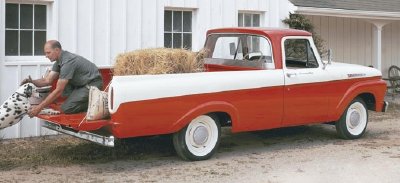
1962 - The Ford F-Series' grilles were slightly revised for 1962, replacing the FORD lettering in the middle with cross bars. Also for 1962, F-Series Styleside 4x4s came with a separate cab and bed, as shown here.
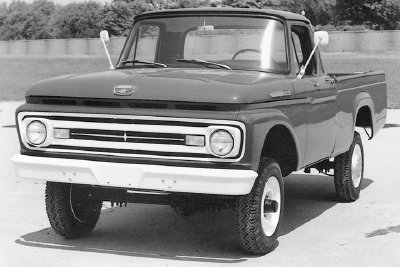
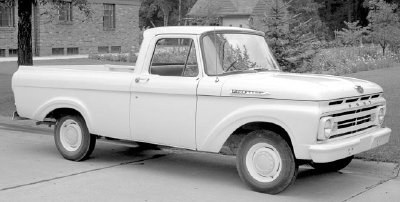
The cab and bed remained integrated on 1962 F-Series 4x2 models (as shown here), although these trucks also would offer the separate cab and bed by midyear.
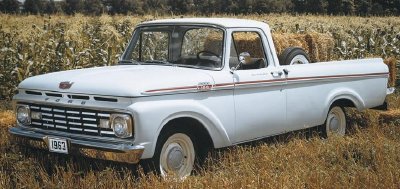
1963 - The 1963 F-100s were offered with three different bed designs: a separate Styleside; a traditional Flareside; and a Styleside integrated with the cab, a version that would be dropped after 1963.
1964 - 1964 brought a separate box for Styleside models, rendering the "unibody" pickup trucks a thing of the past. Also new was a brace of gas engines for the medium and heavy-duty Ford truck lines.

Grilles changed a bit on the popular Ford F-Series trucks in 1964, as shown on this F-250 4x4, which sports an eight-foot Flareside bed.
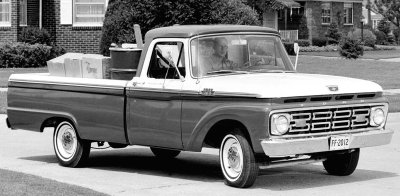
By 1964, an F-Series pickup could be fitted with such car-like features as two-tone paint and air conditioning.
1965 - In 1965, the Twin I-Beam front suspension was introduced with coil springs.
The 1965 and 1966 trucks have a "TWIN I-BEAM" emblem on the front fender.
It was offered only on light-duty two-wheel-drive F-Series pickup trucks, giving them a softer ride and better handling characteristics. Also in 1965, the name "Ranger" is first introduced as a styling package for the F-Series pickup trucks.
Ford started offering a 4-door crew cab on the F-250 and F-350 in 1965. Before 1965, Ford farmed out trucks to a number of coachworks across the country to convert the regular cab trucks to crew cab trucks. These trucks were sold at the Ford dealerships (or even directly through Ford for large orders of vehicles) and many of them still carried a Ford warranty since they were authorized builds. Ford, however, never actually started normal in-house production until 1965.
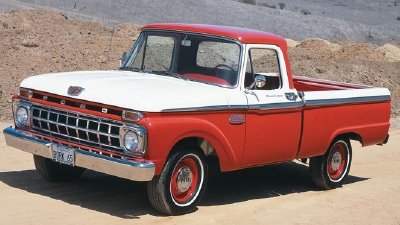
1966 - A restyled grille was the only change of note to the 1966 F-series pickup trucks. This restored example boasts upscale Custom Cab trim.
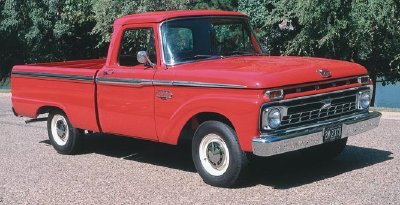
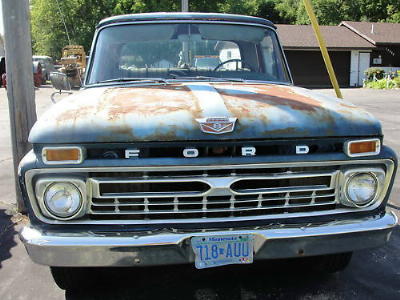
Fifth Generation 1967 - 1972
1967 - Ford's F-Series trucks were restyled for the 1967 model year, although the extra-heavy-duty models still used the earlier 1961-1966 cab and front sheetmetal.
1968 - In 1968, federal regulations required all automotive manufacturers to add side marker reflectors or lights, so Ford redesigned the hood emblems to incorporate reflectors.
(Side marker reflector on hood)
The same year the trucks received larger versions of Ford's FE engine family with the introduction of the 360 and 390 cubic inch engines. Also changed for 1968 were the heater controls, arm rests, interior door handles and window cranks, and the upper trim moulding on models so equipped. Rear side marker reflectors were also added to the lower bed side panels in 1968, per government regulations.
1969 - A Contractors Special package was offered on 1969 Ford F-Series pickups, which included side boxes for the bed and an optional underhood 110-volt generator. F-Series grilles were changed only slightly for 1969.
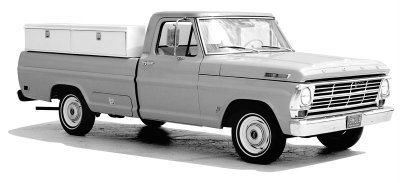
1970 - The gradual push toward comfort and luxury in light trucks gained added momentum at Ford with the arrival of Ranger XLT trim for certain F-Series models. The Ranger XLT was the top trim package with Ranger, Sport Custom and Custom rounding off the rest of the line. XLT equipment bested Ranger gear with items like a woodgrained tailgate appliqué, full-length lower-body moldings, cloth-and-vinyl upholstery, carpeting, and other conveniences. This 1970 Ford F-100 Ranger XLT also sports an extra-cost vinyl roof covering.
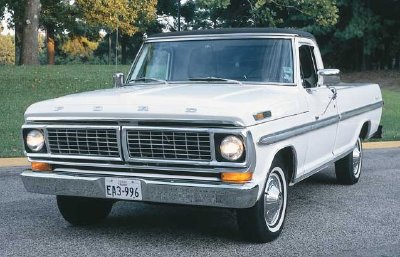
The 1970 Ford F-Series Ranger with four-wheel drive rode high off the ground. A chrome front bumper was newly standard on Ford pickup trucks.
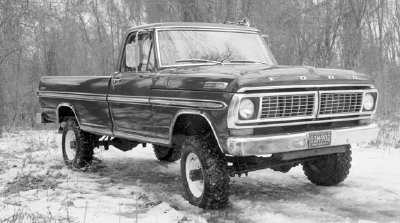
1971 - Other than minor trim updates, the 1971 Ford truck lineup was little-changed from 1970. Ford concentrated instead on its new subcompact Pinto and a redesigned Mustang.
1972 - The extremes of the 1972 1/2-ton F-100 range: a full-dress Ford Explorer (trim package added this year) with lots of bright trim and colorful upholstery...
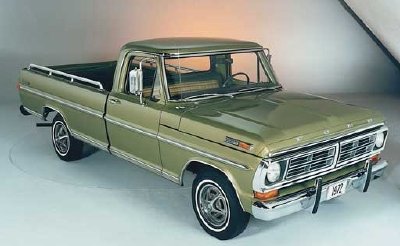
...and an all-business entry-level 1972 Ford Custom.
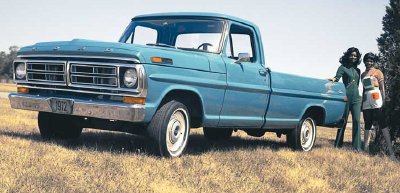
Four-wheel-drive Ford F-250s got a beefier Spicer front axle for 1972.
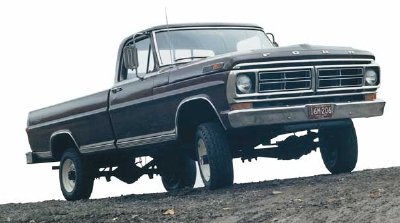
Sixth Generation 1973 - 1979
1973 - The truck was redesigned in 1973; the grille for the 1973 model year featured two silver-metallic plastic inserts divided by an aluminum bar that was part of the main grille frame, with the letters "F O R D" spaced out in a thin rail in the upper part of the grille. Large round headlights were on either side of the grille with the park/turn signal lamps placed above in the same rail where the "FORD" lettering was. The new cab design incorporated behind-the-seat storage for incidental items.
In 1973, a new model was offered, the F350 SRW (single rear wheel) pickup. These were a new heavy duty pickup with contractors and camping enthusiasts in mind. The trucks rode on a longer wheel base chassis but were the same overall length as an F250 pickup. If you ordered the Camper Special package on an F350 SRW it became a Super Camper Special which was designed for the much heavier slide-in campers coming on the market at that time.
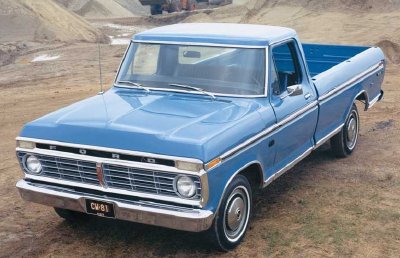
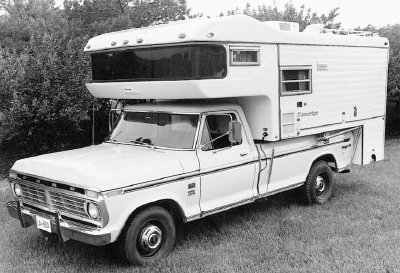
1974 - New for the F-Series that year was its first extended cab. The 22-inch-long extension was large enough to accommodate an optional forward-facing bench or side-facing jump seats. This was Fords response to Dodge's 1973 extended cab.
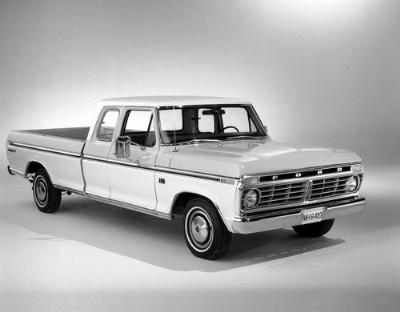
1975 - The F-Series pickup line changed little for 1975, with one exception: added was an F-150 model, which was intended to split the difference in payload capacity between the F-100 and F-250. Although hardly a major event at the time, the Ford F-150 would eventually take over from the F-100 as Ford's base full-size pickup, and it would go on to become the best-selling vehicle in the United States.
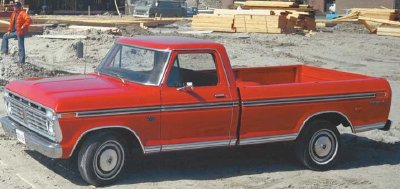
1976 - In 1976, the F-series became the best-selling truck in America, a position it has continued to hold since. This generation is noted for the durability of the body panels as Ford used extensive amounts of galvanized sheet metal to fight corrosion.
The first styling facelift to the 1973-generation Ford F-Series light-duty trucks showed up for 1976, when a new grille and squarish headlamp bezels appeared. F-100s with four-wheel drive, like this long-bed Ranger XLT, came with a standard 360-cubic-inch V-8 engine and four-speed transmission.
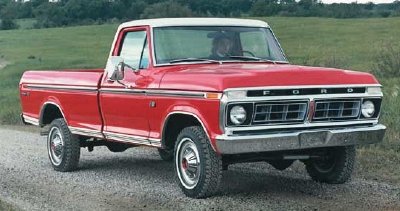

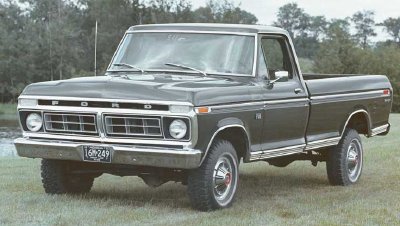
1977 - Although touched on only lightly in the 1977 F-Series pickup truck catalog, four-wheel-drive models were attracting enough interest to warrant a brochure of their own. image. 1977 was the first year for smaller cowl insignias moved near the windshield.
A Ford F-100 "Shorty Flareside" with four-wheel drive shows off the flashy graphics and abundant accessory choices that were aimed at younger buyers who wanted to personalize their trucks. The 117-inch-wheelbase Flareside featured a 6-1/2 foot cargo bed.
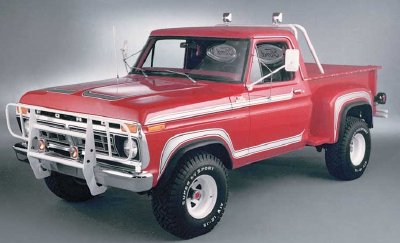
1978 - In 1978, the round headlight design was retained for the regular Ranger and Custom trim levels. The XLT and "Lariat" trim level incorporated rectangular headlights with optional chrome headlight doors and chrome grille insert. The split grille design was overhauled in favor of a single-piece grille insert design. The headlights were also placed in a more stylized "insert" themselves, and the park/turn signal lamps were now placed below the headlights. A luxury Lariat trim was also introduced for 1978.
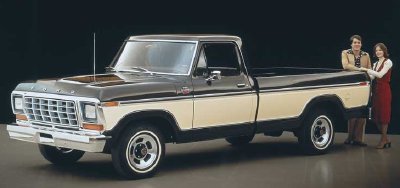
1979 - Ford's 1979 model year brought a new promotional campaign for trucks: the famous "Built Ford Tough" slogan. The round headlights were replaced by rectangular headlamps across all the trim levels and the surrounding grille insert that framed the headlamps was now available in either black, or chrome to match that of the aluminum grille frame. Additionally, an optional chrome-plated "F O R D" letterset could now be seen on the hood immediately above the grille.
A 1979 Ford F-150 Ranger Lariat could get optional Combination Tu-Tone paint and bright box rails.
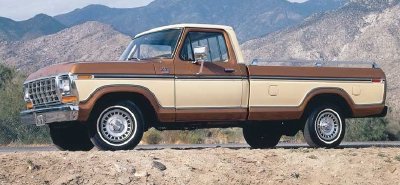
A two-wheel-drive 1979 Ford F-150 Ranger XLT Super Cab shows its length.
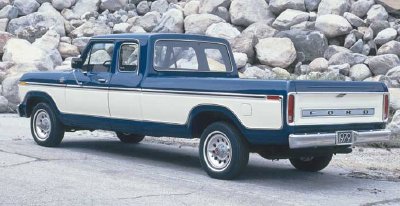
Seventh Generation 1980 - 1986
1980 - F-Series pickups got a new face for 1980, and pickup trucks continued to offer both Styleside and Flareside beds. Bronco and F-Series four-wheel-drive truck models adopted Twin-Traction Beam independent front suspension for 1980. Rival GM 434s wouldn't get independent front suspension until 1988.
(Ford Twin Traction Beam suspension - shown with aftermarket lift)
1981 - In 1981, all Ford truck lines carried over virtually unchanged, although Ford added the F-100 option with a "downsized" 255-cubic-inch V-8 engine. Smaller than even the standard 300-cubic-inch six, this engine may have been more marketing hype than fuel-economy help, but it showed Ford's commitment to increasing gas mileage.

F-Series Ford trucks had long received an annual styling update -- even if it only amounted to a slight change in the grille -- but that practice ceased with the 1981 models, which were virtually identical to 1980's. By this time, the Ford F-Series was on a roll as the best-selling truck in the land, so there was little incentive to mess with success. Besides, the 1980-81 was a good-looking design, as evidenced by this two-tone F-150 Flareside.
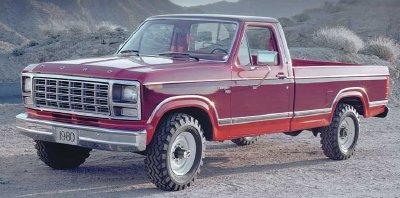
Several custom decor packages were available for light-duty pickups in the early Eighties, one of which included the two-tone paint and white-painted wheels shown here.
Flareside beds, once considered more utilitarian than the smooth-sided Styleside versions, were now considered more stylish. This Ford truck illustrates another example of the custom-decor packages available in 1981.
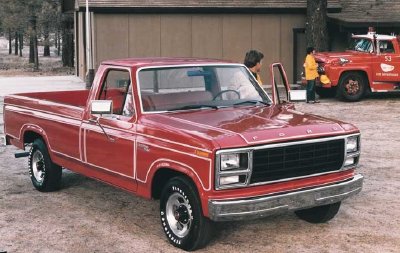
(This customized 1981 Ford truck features a blackout grille and aluminum wheels.)
In 1980 and 1981, the trim packages were:
Custom- Base model with manual locks/windows, vinyl seat, and black rubber floor mat.
Ranger- Intermediate trim that added a color-keyed floor mat, extra chrome, and woodtone dash trim.
Ranger XLT- A step up from the Ranger that added better seat trim, a color-keyed headliner, color-keyed carpeting, aluminum tailgate trim and optional power windows/locks.
Ranger Lariat- a step above the XLT that added a plusher interior.
1982 - Ford introduced a mildly restyled front end for F-Series pickup trucks. The Ranger trim line was dropped from the F-Series in 1982, since that name was to be applied to the new Ford Ranger compact pickup, which replaced the Ford Courier mini-pickup line. Trim options became XL, XLS, XLT, and XLT Lariat.
The 1982 F-series differed in appearance from an ´81 courtesy of a Ford blue oval that was placed in the center of a grille with fewer vertical bars. This prompted the deletion of the Ford lettering that previously graced the leading edge of the hood. In a further bow to fuel economy, the F-100 came standard with a new 232-cubic-inch V-6 for 1982.

SuperCab Ford trucks had a longer cab that allowed for a three-passenger rear bench seat or a pair of jump seats. The divided rear side window first appeared in Ford trucks for 1980.
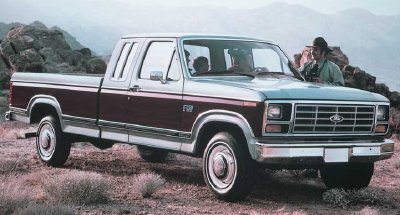
Spoked wheels and tape stripes continued to dress up F-Series trucks, with some new designs being offered for 1982. During this time, pickups were becoming more popular for regular passenger use, largely replacing high-performance cars -- long since regulated out of existence -- as trendy transportation.
For 1982–1986 the trim packages were:
Base - basically the same as the Custom of the previous years.
XL - replaced the intermediate Ranger trim for 1982 as the Ranger name would be used for Ford's new compact truck.
XLS- a new trim level that featured a blacked-out grille, bumpers, headlight bezels, and windshield trim. It also featured a stripe graphics package and black and silver dash trim. Available exterior colors were red, silver, and black.
XLT Lariat- featured floor carpeting, color-keyed headliner, a standard chrome grille, and optional power windows/door locks. In 1985 the tailgate trim was changed to a "flat" full width aluminum with a red "reflector" towards the bottom with chrome FORD letters.
Explorer - Was basically a step up from the XL line. The "Explorer" trim line received a higher geared rear end, an AM/FM radio, Chrome bumpers, Chrome fender well trim, and a chrome grill. The Explorer Line would later be dropped to introduce the Ford Explorer SUV in 1991.
1983 - Among F-Series pickups, only the F-350 was available in a four-door, six-passenger crew-cab body style for 1983. All 350s also came with an eight-foot bed, meaning the truck pictured above stretched more than 237 inches -- just shy of 20 feet -- bumper-to-bumper.
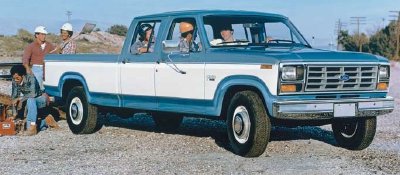
1984 - The F-100 was dropped as the base model at the end of 1983 and the now-familiar F-150 took its place as the base model F-Series truck for 1984. The Ford F-100's GVW rating put it below the threshold that allowed heavier pickups to get by with meeting "looser" truck emission standards, the model was unceremoniously dropped for 1984 -- after 30 years on the market. With that, the F-150 became Ford's base full-size pickup truck. Options included Explorer special-value packages that provided numerous uplevel features at a discounted price.
This was more of a historical loss than a sales one, as the slightly beefier F-150, which had been introduced in 1975, absorbed those buyers -- as evidenced by the fact it would soon become the nation's best-selling full-size pickup, and soon after the best-selling vehicle of any type.
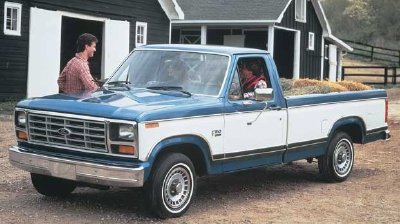
1985 - Ford F-Series pickups offered an optional fuel-injected 5.0-liter engine for 1985, and F-350 crew cab trucks got a dual-rear-wheel option, but otherwise the line saw few changes. Other gas engines in Ford trucks remained carbureted.
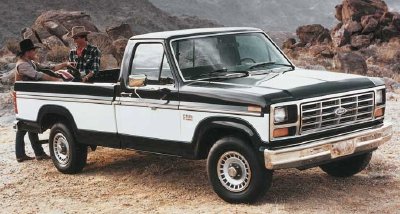
1986 - With the F-150 firmly ensconced as the best-selling vehicle in the U.S., there was little reason to change it for 1986 -- and Ford didn't.
Eight Generation 1987 - 1991
1987 - A new front end featured flush headlights (which required only the bulb, not the whole headlight to be replaced), wraparound parking lights and a simple grille with 12 rectangular openings. New front fenders, hood and bumper added to the new, more streamlined look. A revised instrument panel had more legible gauges and a bigger glove box. Maintenance was made easier via an easy-access fuse box and simplified belt replacement for the alternator, power steering pump and A/C compressor. Safety took a leap forward with antilock rear brakes, as Ford was the first company to make this feature standard on trucks. The 4.9-liter inline six received fuel injection and a healthy 20 percent increase in output, for a total of 150 horsepower. And later in the year, the 7.5-liter V8 also benefited from the fitment of fuel injection.
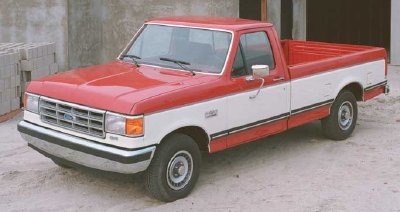
1988 - A new line of Super Duty Ford F-350 trucks was introduced for the 1988 model year. These trucks filled a gap between the regular F-350s and the medium-duty F-600s. Standard was a 7.5-liter V-8 engine, while a 7.3-liter diesel was optional.
F-Series also dropped its available Flareside bed, although it would return a few years later, meaning all pickups carried the Styleside bed shown on the F-150 pictured below.
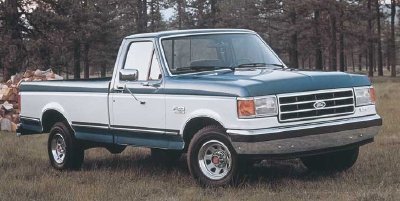
All engines now boasted fuel injection, but otherwise, the F-Series was little-changed after its 1987 facelift.
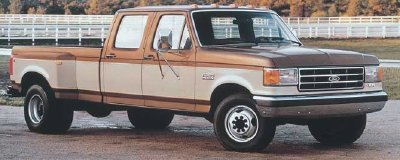
F-350s were offered with GVW ratings of up to 14,500 lbs. for 1988, made possible with the addition of available four-wheel disc brakes, heavy-duty axles, and 16-inch wheels. The optional diesel V-8 grew from 6.9 liters to 7.3.
1989 - Two-wheel-drive versions of the 1989 F-150 wore "EFI" (Electronic Fuel Injection) badges below the left-side headlight as shown above. Four wheel drive improvements included the addition of automatic locking hubs for the F-150 in 1989.
Expanded availability of the four-speed automatic transmission to heavy-duty two-wheel-drive models was the only change of note to Ford F-Series pickups for 1989.
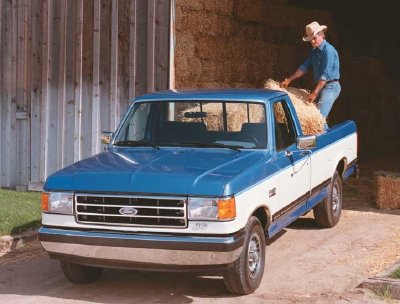
Four-wheel drive versions of the 1989 F-150 had a "4x4" badge below the left headlight, as shown above.
The F-Series was established as the nation's best-selling vehicle,
1990 - 1990 was the year of the Package. A heavy-duty service package, ideal for snowplow operators, consisted of a heavy-duty battery, high-capacity radiator and skid plates. And a sport appearance package included fancy wheels and a large tape stripe adorning the pickup's flanks. An electronically controlled, four-speed unit was now offered which promoted better fuel economy and reduced engine wear
1991 - Automatic hub locks were made standard for F-250 and F-350 trucks for 1991. And as with the F-150 the year before, the manual hubs were optional. Helping to make the transition from two-wheel to four-wheel drive even easier was an optional (on models with the 5.0-liter V8/automatic overdrive transmission) "Touch-Drive" electronic transfer case control that put the truck into four-wheel drive with the press of a dash-mounted button. Two-sided galvanized steel was adopted for the hood, tailgate and doors to help fend off body cancer (rust). The oddly named "Nite" package debuted this year as an option for the XLT Lariat and featured blackout trim, alloy wheels with 235/75/15 white-lettered tires, sport suspension and the obligatory decals.
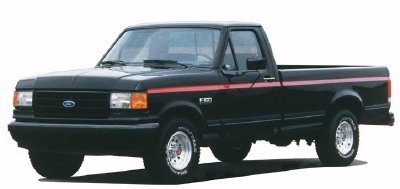
(rename 1991 F-150 Night)
Ninth Generation 1992–1996/1997
1992 - Ford F-Series pickups were also treated to a front-end restyle for 1992 that resulted in a smoother face. The F-Series received a smoother nose that had the front light clusters and bumper ends angled back slightly. "Aero" mirrors and a revised tailgate completed the fresh look. A new instrument panel contained easier-to-use controls and a power point. Plusher seats and door trim made the interior more inviting, and SuperCab models offered a large, optional console in addition to standard three-point rear seatbelts. And after a four-year hiatus, the Flareside version returned in 1992.

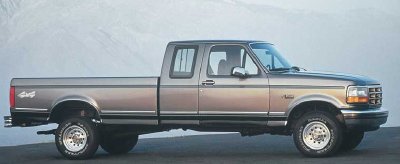
1993 - Replacing the Ford F-150's Nite package for 1993 was the performance-oriented Lightning, which lived up to its name with a special version of the 5.8-liter V-8 engine packing 240 horsepower, vs. 200 for other 5.8s. Like the Nite, Lightning featured blackout trim, to which was added a sport suspension with 17-inch alloy wheels, front spoiler, and specific bucket seats.
The Custom model was dropped, as the XL became the new base model. The Sport Appearance was also axed. Raising the seat cushion and adding padding improved rear seat comfort in SuperCab models.
(Ford F-150 Lightning)
1994 - Light-duty F-Series pickups got a driver-side airbag for 1994, but there were few other changes of note. Safety upgrades took place for 1994 when a driver's side airbag (except on heavy-duty models), side door beams and a high, center-mounted third brakelight debuted. A couple of new options showed up this year: a CD player and a 40/20/40 front seating arrangement that had a center seat which converted to an armrest with a built-in storage compartment and cupholders.
1995 - 1995 saw the the introduction of the Eddie Bauer edition. Named after the outdoor gear and apparel company favored by yuppies, the Eddie Bauer F-Series was the most luxurious Ford pickup available, with features such as two-tone paint, air conditioning, power everything, stereo with cassette, alloy wheels and the 40/20/40 front seat. A new 7.3-liter, "Power Stroke" turbodiesel became optional on F-250 Heavy Duty pickups and F-350'. This new direct-injection turbodiesel engine produced 210 horsepower and a whopping 425 pound-feet of torque -- both up significantly over previous versions. Matched to a four-speed automatic gearbox, the new engine put out 210 horsepower and 425 foot-pounds of torque, making it ideal for heavy hauling and towing applications.
1996 - Ford F-Series pickup trucks continued with few changes for 1996. F-150 Flareside and Lightning models met their demise and shorter-wheelbase versions of the F-250 Heavy Duty SuperCab and Crew Cab debuted. The short-wheelbase versions had a bed length of 6.75 feet versus the 8-foot bed of the longer-wheelbase trucks.
1997 - Arriving in the 1997 Ford trucks lineup was a completely redesigned full-size truck that featured the most radical changes yet seen from one generation of Ford pickups to the next. Introduced early in the 1996 calendar year, only certain models of the new F-Series trucks were offered at first, so some versions of the 1996-style trucks continued to be sold alongside them.
Among others, these included all the heavy-duty pickups (Ford F-250 HD and F-350), which wouldn't be redesigned until the 1999 model year. Among the Ford F-Series' many early accolades was the coveted Truck of the Year award from Motor Trend magazine
In its most radical change since 1980, the F-Series was redesigned for 1997. At first offered only in F-150 form -- and even then with a limited lineup -- it arrived early in the 1996 calendar year and was sold alongside the 1996 models. Both Flareside (shown here) and Styleside beds were available.
Early production focused on SuperCab (extended cab) versions, which featured a rear-hinged back door on the passenger side. These were sometimes called "half doors," as they were smaller than conventional ones. Also, they hinged at the rear and could only be opened after the corresponding front door was opened.
As production ramped up, regular-cab versions of the Ford F-150 truck became more plentiful. Grilles came in either body color (as shown here) or chrome, depending on trim level. Power came from a trio of new engines: a 4.2-liter overhead-valve V-6, and overhead cam V-8s of 4.6 and 5.4 liters. All produced more horsepower than the larger engines they replaced.
Trim levels consist of base XL, midlevel XLT and plush Lariat.
Ford didn't waste any time entering the sleek new F-150 in the NASCAR Craftsman Truck Series.
Tenth Generation 1997 - (2004)
1998 - Ford Motor Company reached a milestone in 1998 when it celebrated the 50th anniversary of the F-Series brand. The NASCAR F-150 marked the Golden Anniversaries of both the stock-car racing association and Ford's F-Series pickups. The dual side exhausts shown on this prototype were moved to the rear on production versions.
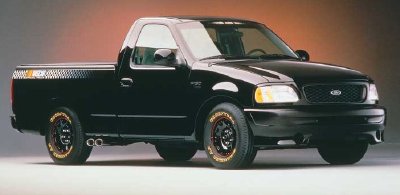
Ford didn't let the 50th Anniversary of the F-Series pass unnoticed, with numerous promotions depicting the inaugural 1948 version beside a new 1998 model.
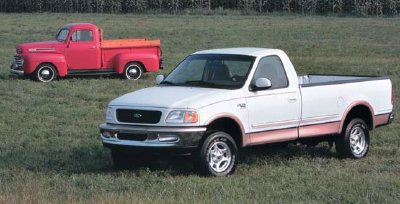
1999 - Midway through the 1998 model year, Ford finally introduced new heavy-duty F-Series pickup trucks based on the redesigned light-duty versions that had appeared for 1997. Tagged as 1999 Ford truck models, the F-250 HD and F-350 carried a similar but brawnier look, befitting their load-lugging status.
Returning in 1999 after a three-year hiatus was the high-performance Lightning truck, and it returned with a vengeance. Again based on the Ford F-150, it now carried an exclusive supercharged version of the 5.4-liter V-8 packing a mighty 360 horsepower. As before, a lowered sport suspension and special trim was included in the package.
Also in 1999, a loaded "King Ranch" edition with two-tone paint and a cabin that would make a Texan proud with its abundance of saddle leather trim was introduced.
Ford F-250 Heavy Duty and F-350 had lost out when the lighter-duty F-Series models were redesigned for 1997, but these trucks made up for it with a redesign of their own for 1999. Now called Super Duty, they arrived early in the 1998 calendar year, and like their lighter-duty linemates, offered a SuperCab with dual rear-hinged back doors. Styling touches included grilles incorporating vertical "nostrils" at each edge.
The 1999 Super Duty F-250 HD and F-350 also were available in crew cab form with four conventional side doors. Engine choices ranged up to a 6.8-liter V-10 with 275 horsepower, and a 7.3-liter V-8 turbodiesel with 235 hp and a stump-pulling 500 pound-feet of torque.
New for SuperCab versions of the F-150 were dual rear doors; previously, only the passenger side had a rear door. Other changes for 1999 included a revised grille and 25 more horsepower for the available 5.4-liter V-8, now with 26.
In 1999, the Ford Super Duty line included even heavier-duty F-450 and F-550 truck models that could be fitted with a variety of bed styles.
With the addition or redesign of several important vehicles and the deletion of its long-standing heavy-duty truck lines, it can never be said that Ford didn't close out the 20th century with a bang. In combination, these changes helped position the company for the next century -- and its second hundred years.
HELP WANTED: Want to contribute your articles/photos to this site? Click HERE.
© 2010 Blue Oval Trucks - 959 Media LLC - All Rights Reserved
'Blue Oval Trucks' and its logo are Service Marks of Blue Oval Trucks and are owned by James Oaks Enterprises LLC.
'Blue Oval Trucks' is an enthusiast site and is in no way affiliated with the Ford Motor Company

1948-1952 Ford Pickup Truck cowl mount RADIO ANTENNA , All F series http://t.co/4qV2hbYA2N http://t.co/T40GMZzLNY 08/18/15, @enriquevlljo
1948-1952 Ford Pickup Truck cowl mount RADIO ANTENNA , All F series http://t.co/1U4psr7Gd8 http://t.co/qdpZxMYeKI 08/18/15, @webbbrentwebb
1948-1952 Ford Pickup Truck cowl mount RADIO ANTENNA , All F series http://t.co/bISctNdDWc http://t.co/vKP4VhsNj1 08/18/15, @JustineMannbp
Comfortable, and fast with some problems. 1948 Ford F1 pickup truck Ford's legendary F Series began in... http://t.co/bg7B6qzDhn 08/18/15, @JouhnBrado
1948-52 Ford Pickup Truck SUN VISORS - BLACK F-1, ALL F SERIES TRUCKS http://t.co/X84TyduO9d http://t.co/7wY1nvo4KW 08/17/15, @JustineMannbp
1948-52 Ford Pickup Truck SUN VISORS - BLACK F-1, ALL F SERIES TRUCKS http://t.co/ur7tUezevF http://t.co/Tc7gZnjg63 08/17/15, @ProductLavish
1948-52 Ford Pickup Truck SUN VISORS - BLACK F-1, ALL F SERIES TRUCKS http://t.co/GHaVsj454C http://t.co/sQoRRmHGMX 08/17/15, @webbbrentwebb
1948-52 Ford Pickup Truck SUN VISORS - BLACK F-1, ALL F SERIES TRUCKS http://t.co/AkgyVmMKFE http://t.co/XjEQWJCfDK 08/17/15, @enriquevlljo
-
2008 Ford F-250 XL
08/22/15, via KSLWhite Ford F-250!! Very clean truck! Runs down the road very nice! It has bushwhackers and bigger wheels on it with XD series rims that are in great condition! The bed is rhino lined and it has fuel tank that works great and tool box if you want them ...
-
2015 Roush F-150: Is it the Next Best Off-Road Truck?
08/21/15, via Mustangs and Fords MagazineRoush Performance is well known for their aggressive and well built Ford ... truck is no one-trick pony as evident by the choice of shocks on this factory off-road rig. Roush teamed up with FOX Racing Shox to equip the Roush F-150 with a 2.0 Performance ...
-
Ford & General Motors: Ready to Go Full Bull?
08/19/15, via Barron'sBut it is their F-Series line of pickups which is the best-selling luxury vehicle in the US. And in the September quarter Ford will roll out the F-150 Limited, a posh truck that will cost approximately $60,000. Technically F is in the latter stages of ...
-
Roush 2015 Ford F-150 Gets Mean with Suspension, Exhaust Upgrades
08/20/15, via AutomobileThe Roush 2015 Ford F-150 is the newest creation, adding a meaner look, new sound, and upgraded suspension to the standard all-aluminum pickup. If Roush was going ... The Fox 2.0 Performance Series suspension adds coilovers and shocks with boots.
-
2015 Ford F-150 Embraces the Roush Treatment, It's Mostly About Appearance - Photo Gallery
08/20/15, via Auto EvolutionFor example, Roush teamed up with Fox and rewarded the Ford F-150 pickup truck with the 2.0 Performance Series suspension system featuring coilovers and shocks with boots. The package also includes Roush 20-inch wheels wrapped in Mickey Thompson Baja ATZP3 ...
-
Ryan Blaney wins Truck Series race at Bristol, UNOH 200 results
08/19/15, via Tire BallRyan Blaney won Wednesday night’s NASCAR Camping World Truck Series race at Bristol Motor Speedway. The driver of the No. 29 Cooper Standard Ford F-150 took home the win in the UNOH 200 presented by ZLoop after the race resumed following a red flag for rain.
-
Ford's $60,000 exhaust pipe
08/19/15, via FOX NewsThe Ford F ... with the truck’s model year and build number. Expect it the latter to rise quickly. The Limited won't actually be artificially limited when it goes on sale this winter, and with average transaction price for the F-Series now above $44,000 ...
Ford F-Series Truck (Matchbox 2007 5-Pack)
Ford F-Series Truck (Matchbox 2007 5-Pack)
Featured Products
Free shipping
- 1948 FORD PICKUP & TRUCK OWNERS INSTRUCTION & OPERATING MANUAL -...
- Proudly Designed, Printed & Finished in U.S.A / Available in S, M,...
- The Nice and Unique Gift for Holidays and Special Occasions. We...
- This is a great go-to t-shirt. It has a classic fit and it's...
- Unisex Sizing
- Makes A Great Gift Idea
- Machine Washable
.JPG/220px-Ford_F-1_Pickup_(Hudson).JPG)
